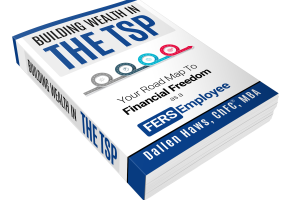The Thrift Savings Plan (TSP) is a crucial factor to create a secure and confident retirement for federal employees. Your paycheck contributions significantly impact your retirement savings and overall financial future. In this article, we’ll break down the contribution limit changes for 2025 and provide insights on how much you should contribute to maximize your retirement outcomes.
2025 Contribution Limits
The government has set the 2025 elective deferral limit for TSP contributions at $23,500. For those under age 50, the $23,500 limit applies to both the Roth and traditional money added together. For example, if you contribute $15,000 into the traditional TSP and another $8,500, you would hit the yearly limit.
For participants ages 50 or older, there are additional “catch-up” contribution limits for 2025. You are eligible to start the catch-up contribution the year you turn 50. For example, if you turn 50 years old in December of 2025, you can contribute $31,000 for the year of 2025.
Check out this table to see the dollar amount per pay period you would have to contribute if you would like to reach the maximum contribution for the year of 2025:
Age | Contribution Limit | Amount Per Pay Period (Assuming 26 Per Year) |
Under 50 Years | $23,500 | $903 |
Ages 50 through 59 and over age 63 | $31,000 | $1,192 |
Ages 60, 61, 62, and 63 | $34,750 | $1,336 |
What If The Max Isn’t Enough For Me?
For high-income earners or individuals with ambitious retirement goals, the TSP contribution limits might not be sufficient to meet their financial objectives. If you find yourself in this situation, consider supplementing your TSP contributions with other investment vehicles. Here are a few options to explore:
Individual Retirement Accounts (IRAs): In addition to your TSP, you can also contribute up to $7,000 (or $8,000 if you’re 50 or older) to a traditional or Roth IRA in 2025. This allows for additional tax-advantaged savings.
Brokerage Accounts: There is no limit to how much you can invest in brokerage accounts. Although, they don’t provide the great tax benefits of retirement accounts.
Spousal Contributions: If you’re married and your spouse has income, consider having them contribute to their own TSP or IRA or 401K.
Roth Contributions: The limits for Roth and traditional accounts are the same. However, you have to pay taxes on your wages before they can be invested in a Roth account. Also, you are only eligible to contribute to a Roth account if you are under certain income limits. For 2025, the income limits are $150,000 for a single person and $265,000 for married persons filing a joint tax return. The beauty of a Roth IRA is that you never have to pay taxes again on what you invest in a Roth IRA nor on any of your investment gains in the Roth IRA account. It can grow tax free for the rest of your life and you can withdraw funds after age 59 ½ without owing taxes. The Roth IRA can be a powerful tool for your retirement planning.
What If I Can’t Contribute The Max?
Not all federal employees can afford to max out their TSP contributions every year, and for many, it might not even be the smartest financial move. Striking a balance between enjoying life today and preparing for the future is essential. You don’t want to spend your entire career scraping by on a bare-bones budget just to fund your retirement. On the other hand, living extravagantly now and struggling financially in retirement isn’t a good trade-off either. The key is finding a middle ground that allows you to live comfortably both now and in the years ahead.
The start of a new year is a perfect time for self-reflection and setting meaningful goals. However, it’s common for people to set unrealistic goals or lose focus on them after just a few days. Fortunately, the TSP offers a unique advantage: once you set your contribution amount, it remains consistent until you decide to adjust it. This “set-it-and-forget-it” feature allows many participants to increase their contributions without constant attention. Over time, they often find themselves pleasantly surprised by how much their TSP balance has grown, all thanks to this simple but powerful habit.
Employer Match
The match is one of the most well-known aspects of the TSP, but I would be amiss if I didn’t mention it for those who might not be as familiar with it.
Your agency offers a match that can add up to 5% of your salary as long as you contribute at least that much. But it is broken down into the following parts:
The first 1%: Your agency will automatically contribute 1% of your salary into your TSP account regardless of how much you contribute (even if you don’t contribute at all). But in most cases, you’ll have to work with the government for three years to become vested* in this amount.
*Being vested means you can take that money with you even if you leave federal service.
The following 3%: Your agency will match dollar for dollar of the first 3% of your pay that you choose to contribute.
The next 2%: Your agency will then match 50 cents of every dollar of the next 2% of your base pay that you contribute.
This chart illustrates how this works:
% of Salary That You Contribute | Your Agency’s Contribution | Total % Contributed to Your TSP |
0% | 1% | 1% |
1% | 2% | 3% |
2% | 3% | 5% |
3% | 4% | 7% |
4% | 4.5% | 8.5% |
5% | 5% | 10% |
More than 5% | 5% | Your Contribution + 5% |
To summarize, if federal employees don’t want to leave any money on the table, then it generally makes sense to contribute at least 5% of your salary into your TSP account.
Often, it makes sense to invest much more than 5%, but you have to start somewhere.
Conclusion
Your TSP contributions play a key role in shaping your retirement, but they’re just one piece of the puzzle. To maximize your growth potential and make the most of your savings, it’s essential to explore other strategies as well. Dive into our comprehensive collection of TSP articles to discover how to get the most value out of your retirement plan: https://hawsfederaladvisors.com/tsp-investing-articles/


